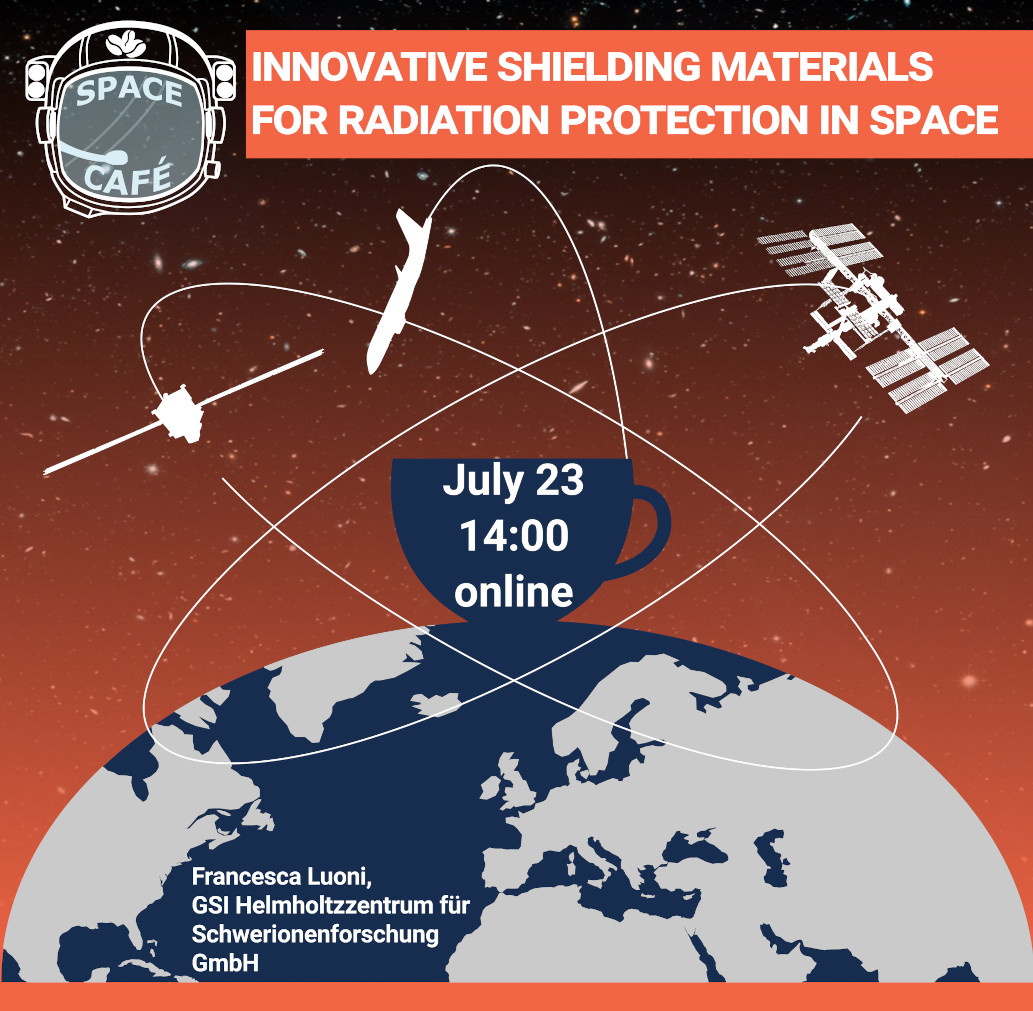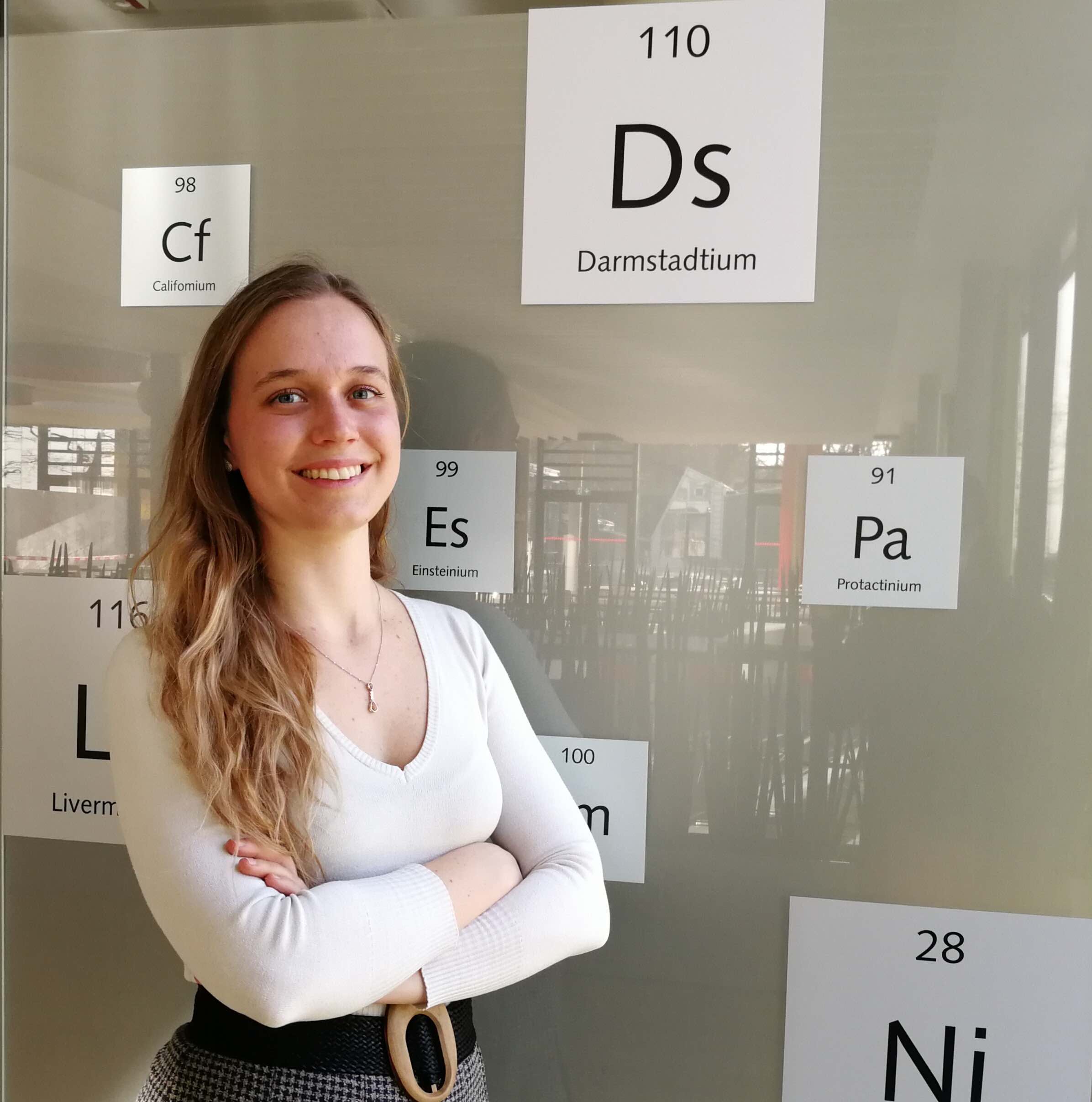Innovative shielding materials for radiation protection in space

We evolved on a planet that naturally shields us from cosmic radiation through its magnetic field and atmosphere. To explore deep space, we need to face the harmful environment posed by radiation emitted by the Sun and by other stars within and outside the Milky Way. How can accelerator-based experiments on Earth help us to find solutions to the problem?
Learn more about at our next event on July 23, 2021, at 14:00 via Zoom. Registration is mandatory at the end of this page.
More about Space Café event series.
Speaker

Francesca Luoni is a third-year PhD student at GSI Helmholtzzentrum fuer Schwerionenforschung. She holds a Bachelor's Degree in Engineering Physics and a Master of Science in Nuclear Engineering from Politecnico di Milano. She completed her Master Thesis work at the German Aerospace Centre DLR, Munich, about the activity of Janus Particles in Plasmas. Pushed by her passion for Space and expertise in radiation, in 2018, she started her PhD in the topic of radiation protection for long-term deep-space missions.
Talk: Innovative shielding materials for radiation protection in space
Galactic cosmic rays are the number one hindrance to manned space exploration. Since the technology to protect our space explorers through actively generating electromagnetic fields around the spaceship is not advanced enough, using the protection of shielding materials around the spacecraft habitat is the only currently available option. Stochastic and deterministic simulations are the tool we fully rely on to predict the quality of candidate shielding materials. But how can we test our simulation capabilities? This is done through testing at accelerator facilities around the world materials such as polyethylene, which is the golden standard in radiation protection in space, aluminium, the main structural material of spacecrafts, and several innovative candidate shielding materials. The results obtained are then reference checked against the predictions of simulations. The goal is to find the best materials to make exploration and colonization of our Moon, Mars, and other bodies of the Solar System, one day possible.